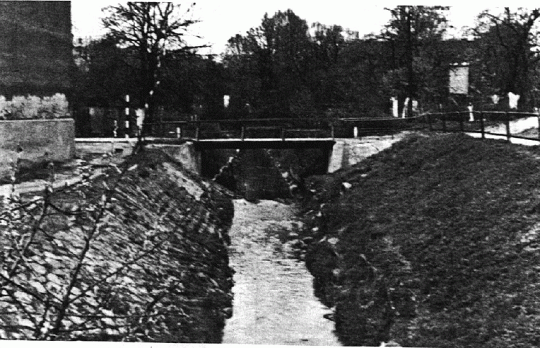Writings on the Hommel River detail how hydro power ran Elbing's flour mills
Here is a great page on the Elblag, My City website all about the Kumiel River, previously called the Hommel. These excerpts from historical writings about the Kumiel presented on the page give a pretty good picture of the location of the Elbing mills on a diverted section of the river.
Co-director Grundmann, 1924
The lower pond is separated from the Kumiela gorge, which is here called Pulvergrund, by a large dam. From here, the water of Kumiela is led through a canal at the upper edge of the ravine to four mills located in the city. This canal flows in large pipes underground along the Äußerer Mühlendamm.In the city, it splits into several branches and once supplied the moats of the city and the castle, as well as 67 open and 38 closed wells of the Old and New Town, to finally flow into the Elbląg River in several places.
Prof. Baseler, 1925
Closer to the city the channel from Kumiela drives the mills on Äußerer Mühlendamm and its water was led through the city through underground channels during the times of the Order.
Emil Kreuger, 1930
Part of the water follows a canal that stretches north of Grund, then turns south and runs along Äußerer Mühlendamm, where it feeds the Scheeder-, Notsack-, Ober- and Untermühle mills.Below the Notsackmühle, the channel consists of large pipes lying underground. It is then divided into several channels that lead the water from Kumiela to Elbląg. Previously, they supplied the moats of the city and the castle, as well as many open and closed wells, from which the Elbląg inhabitants covered part of the water demand.
So our family flour mill was one of four mills situated on Äuserdem Mühlendamm on a channel of water diverted from the original course of the Hommel.

